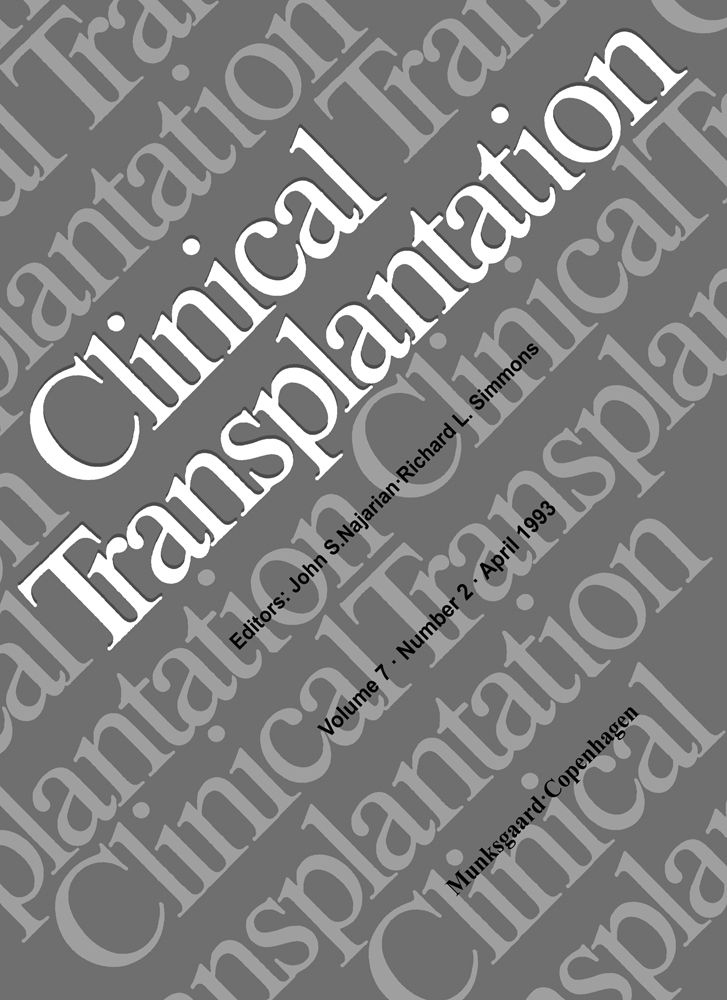A comparison of cadaver donor kidney storage methods: Pump perfusion and cold storage solutions
Abstract
The effects of preservation methods and cold storage solutions on the outcome of more than 17000 first cadaver kidney transplants were studied from data reported to the UNOS Scientific Renal Transplant Registry and to the UCLA Transplant Registry between 1987 and 1991. Early graft function was better in pump-preserved than cold-stored kidneys: 84% vs 73% at 1 week; and 87% vs 80% at discharge, respectively (p<0.01 in both comparisons). However, graft survival rates were similar at 3 months (87% vs 86%) and 1 year (80% vs 80%) (p>0.05 in both comparisons). Rejection episodes prior to discharge were the same in both groups. An analysis of results from 17 transplant centers where more than 50 pump-stored kidneys were transplanted yielded similar results. Good early graft function of pump-stored kidneys did not necessarily lead to better graft survival, when all current perfusion methods were compared. There was no clear superiority in terms of graft survival for pump-stored kidneys, even with long cold ischemia lime or with kidneys from older donors. A comparison of UCLA Registry data survival results of different preservation solutions showed that 78% of 4565 kidneys preserved in University of Wisconsin (UW) solution had good immediate function, which was significantly better than those achieved with Collins' (74%) or Euro-Collins' solutions (68%) (p<0.01). The 1-year graft survival rale was significantly better with UW (83%) or Collins' (81%) solutions than with Euro-Collins (78%) solution.




